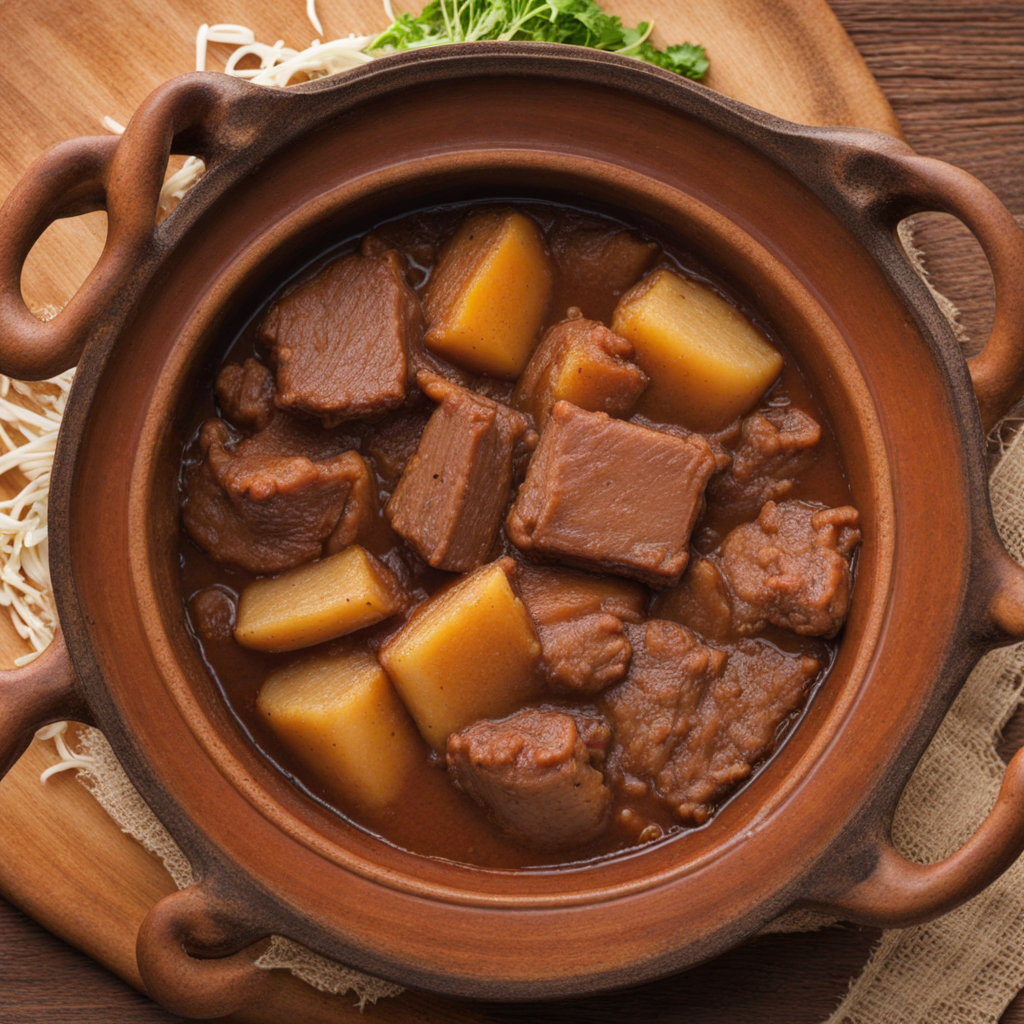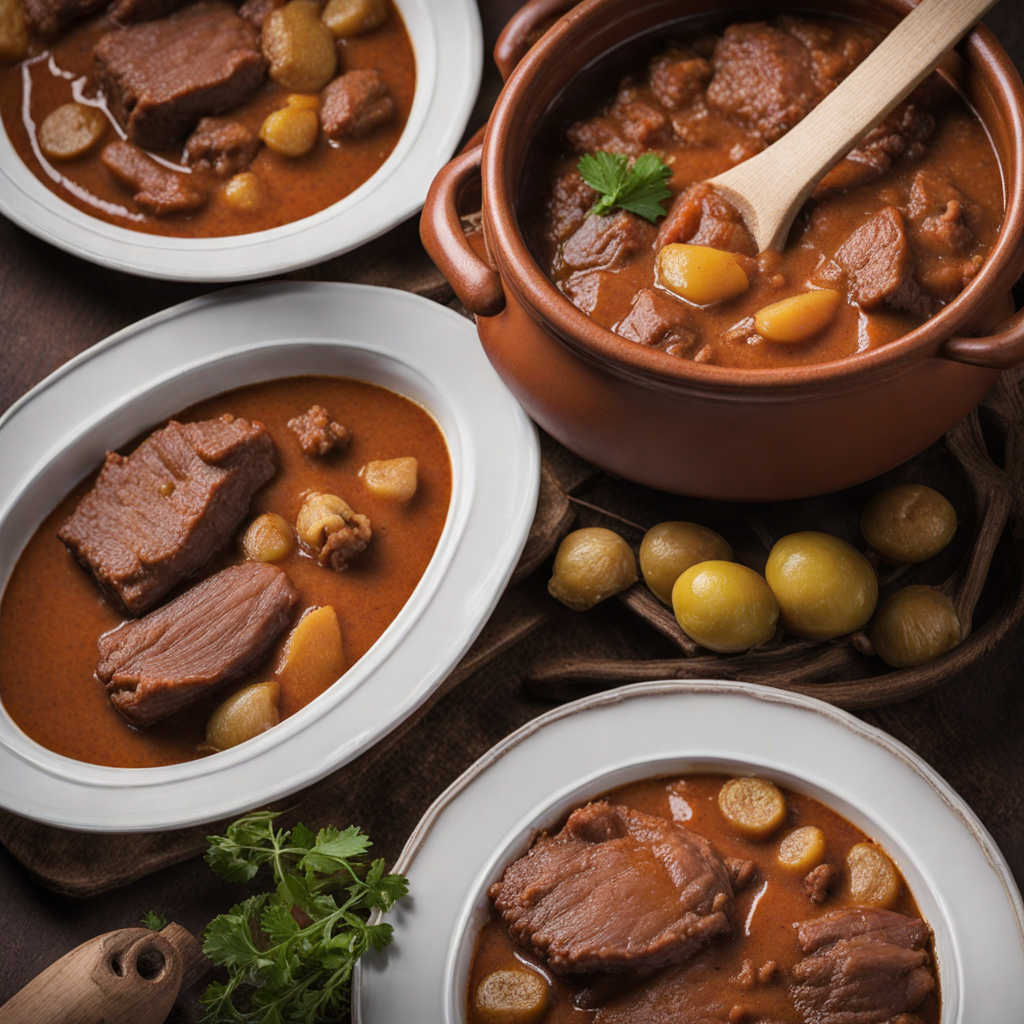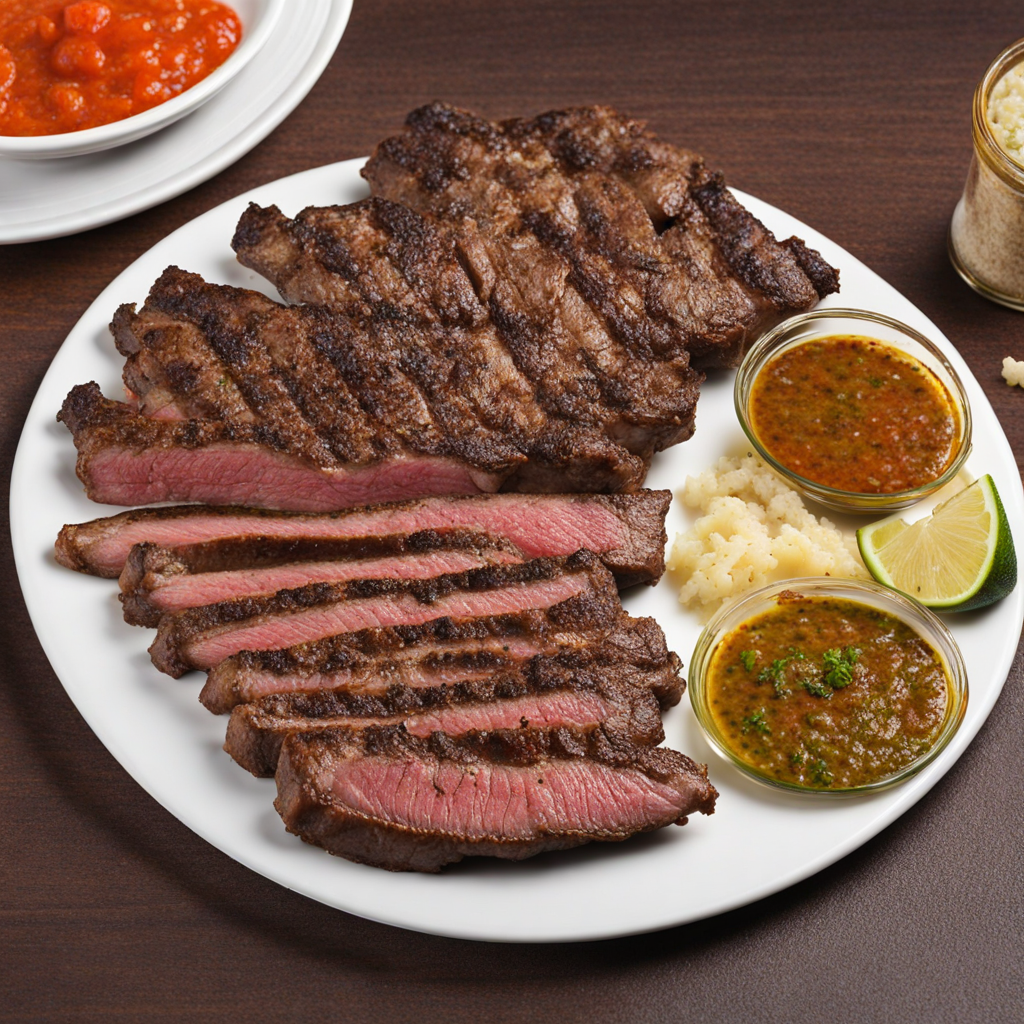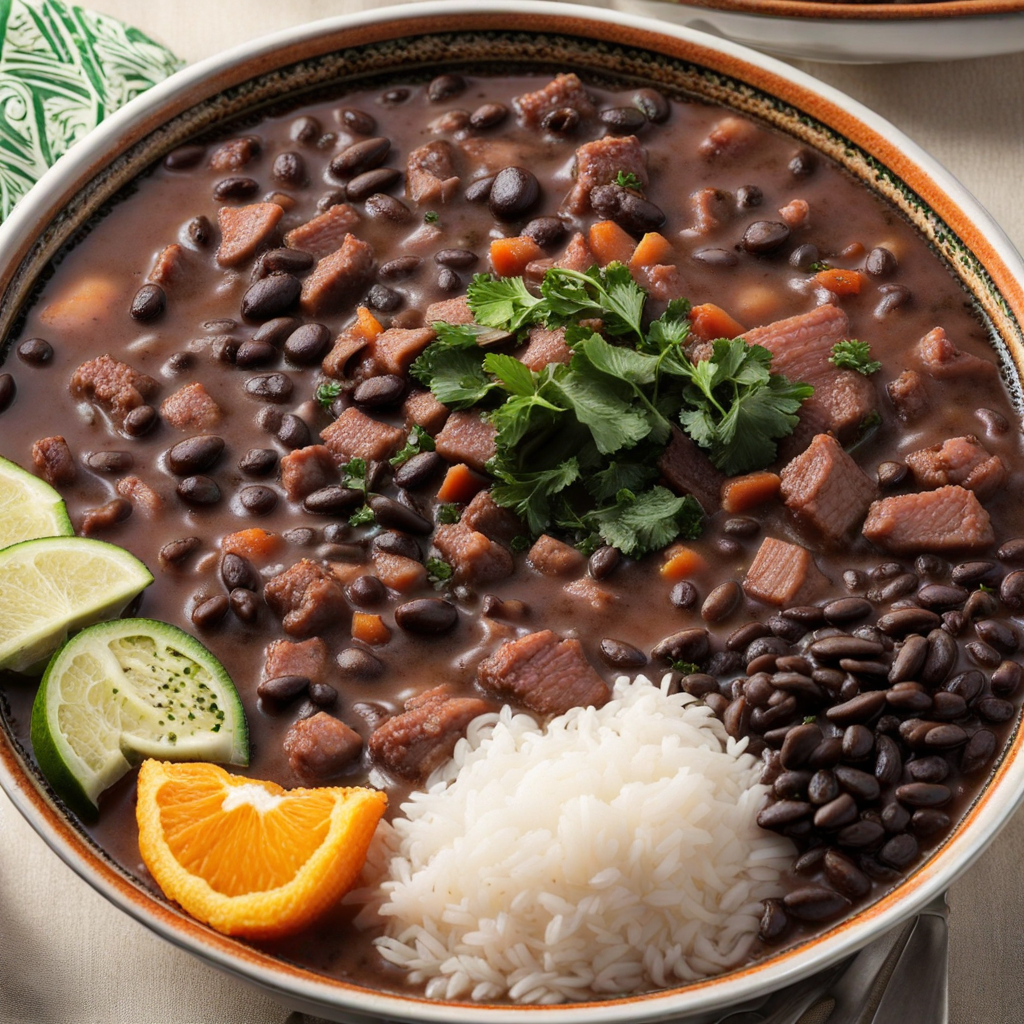Barreado
Barreado is a traditional Brazilian dish that hails from the coastal state of Paraná, renowned for its rich and hearty flavors. This savory stew is made primarily with beef, which is slow-cooked for several hours until it becomes incredibly tender and infused with flavors. The meat is often marinated with a mix of spices, garlic, and onions, allowing it to soak up the aromatic profile of the ingredients. The slow cooking process takes place in a tightly sealed clay pot, which ensures that the meat retains its natural juices and results in a thick, luscious sauce that envelops the beef. Accompanying the beef is a foundation of farofa, a toasted cassava flour mixture that adds a delightful crunch and nuttiness to the dish. Traditionally served with rice, Barreado creates a satisfying and comforting meal that highlights the simplicity and heartiness of Brazilian cuisine. The dish is often garnished with fresh cilantro and sometimes served alongside a slice of orange, which adds a refreshing contrast to the rich flavors of the stew. What makes Barreado truly unique is its history and the communal nature of its preparation and consumption. Often enjoyed during family gatherings or special occasions, the dish invites people to come together, sharing not only a meal but also stories and memories. The combination of flavors, the richness of the beef, and the tradition behind its preparation make Barreado an exceptional culinary experience that transports you to the heart of Brazil.
How It Became This Dish
Barreado: A Culinary Journey Through Brazilian History Barreado is more than just a dish; it is a cultural emblem of the Brazilian state of Paraná, steeped in history and tradition. This hearty stew, traditionally made with beef, spices, and a unique cooking method, serves as a flavorful testament to the region’s rich agricultural heritage and the blending of indigenous, African, and European influences. Origins The origins of barreado can be traced back to the 19th century in the coastal town of Morretes, located in the Serra do Mar mountain range. The name "barreado" comes from the Portuguese verb "barrear," which means to barricade or to close off. The cooking method used in preparing barreado involves sealing the pot to create a steam-cooking environment, which is essential for developing the dish’s unique flavors. This method is believed to have been influenced by indigenous cooking techniques, where food was often wrapped in leaves and buried in the ground. The indigenous peoples of the region, such as the Guarani, utilized slow and moist cooking methods that allowed for the infusion of flavors. When the Portuguese settlers arrived in Brazil, they adapted these techniques, incorporating local ingredients and spices into their cuisine. Cultural Significance Barreado is not just a culinary delight; it holds significant cultural importance in Paraná. It represents the fusion of indigenous, African, and European culinary traditions. The dish is often served during family gatherings, festivals, and special occasions, symbolizing unity and communal bonds. In the context of Brazilian culture, food has always played a crucial role in social interactions. Barreado is traditionally served with rice, and diners often accompany it with farofa (toasted manioc flour) and hot sauce. This communal style of eating reflects the Brazilian ethos of sharing and hospitality. The dish is particularly significant during the Festas Juninas, a popular celebration in Brazil that takes place in June, honoring rural traditions and Saint John. In these festivities, barreado is a star attraction, bringing communities together in celebration. The dish transcends mere sustenance; it is a symbol of heritage and identity for the people of Paraná. Ingredients and Preparation Traditionally, barreado is made with cuts of beef, such as brisket or chuck, which are marinated in a blend of spices that may include garlic, onion, black pepper, and bay leaves. The marinated meat is then placed in a heavy pot, often made of clay, layered with bacon and other seasonings, and covered with a lid sealed tightly with dough to trap moisture during cooking. The pot is placed in a low-fire setting, often buried in embers or placed atop a bed of hot coals, and slow-cooked for several hours—typically around 12 to 24 hours. This method allows the meat to become tender and infused with the aromatic spices, resulting in a rich, flavorful stew. The steam produced within the sealed pot is essential, as it tenderizes the meat and melds the flavors, creating the signature taste of barreado. Evolution Over Time As Brazilian society evolved, so did barreado. The dish remained a staple in Paraná, but its preparation and presentation adapted to changing tastes and culinary influences. In the 20th century, with urbanization and the growth of the culinary tourism industry, barreado began to gain recognition beyond its regional roots. Restaurants in Morretes started to showcase barreado as a highlight of Paraná’s cuisine, attracting visitors eager to experience this traditional dish. The rise of culinary tourism has played a vital role in the preservation and promotion of barreado, allowing it to reach a broader audience and encouraging chefs to innovate while respecting its traditional roots. Modern variations of barreado have emerged, reflecting contemporary culinary trends. While traditionalists may insist on the classic preparation methods, innovative chefs are experimenting with different cuts of meat, incorporating vegetables, and even introducing new spices. Some have even created vegetarian versions of barreado, using beans and legumes to emulate the dish's depth and richness. Despite these modern adaptations, the essence of barreado remains intact. It continues to be prepared in the traditional way for festivals and family gatherings, ensuring that its roots are not forgotten. The dish embodies the spirit of Paraná and serves as a reminder of the region's diverse cultural heritage. Barreado Today In recent years, efforts have been made to preserve the traditional methods of making barreado and to recognize its cultural significance. In 2010, the Brazilian government enacted a law to protect the traditional knowledge and practices associated with barreado, ensuring that this culinary heritage is passed down through generations. Moreover, barreado is celebrated in food festivals and events across Brazil, where chefs showcase their unique interpretations while honoring the traditional preparation methods. This celebration not only highlights the dish's importance but also brings together communities and fosters a sense of pride in local cuisine. Conclusion Barreado is a dish that encapsulates the essence of Brazilian culture—its history, diversity, and communal spirit. From its indigenous roots to its place in modern culinary tourism, barreado has evolved while remaining a beloved symbol of Paraná's heritage. As it continues to be shared at family tables and festive gatherings, barreado serves as a delicious reminder of the rich tapestry that is Brazilian cuisine. Its legacy is not just in the flavors it imparts but in the stories and traditions it carries forward, making it an integral part of Brazil's gastronomic identity.
You may like
Discover local flavors from Brazil







